This two part series goes behind the scenes of the strategy and operations of producing a major PGA sanctioned golf tournament.
PART 1 - Operations: We sat down with Nick Schling, Director of Operations
PART 2 - Strategy: We sat down with Andy Harmatys, SVP of Tournament Affairs and Events
INTRODUCTION
One of the great things about our interview series is that we get to sit down with the best of the best. So I thought it would be incredible to take a deep dive into the strategy and operations of one of the top golf tournaments in the country: The Farmers Insurance Open. Farmers is a co-sanctioned PGA Tour event held at Torrey Pines Golf Course in San Diego each year.
You event operations geeks (us included), are going to enjoy.
In Part 1 of the series Nick shares:
- A detailed look at their operational focus at each stage of the process (from planning, pre-production, load-in, event days and load out).
- What the challenges are at each step and how he attacks those challenges.
- The importance of evaluation, ideation and exploration.
- How they are looking at technology to improve their operations.
- How he manages his production schedule and communication with 70+ vendors.
- How he approaches vendor selection and the non-negotiable traits he looks for when selecting vendors.
- His career advice and much more...
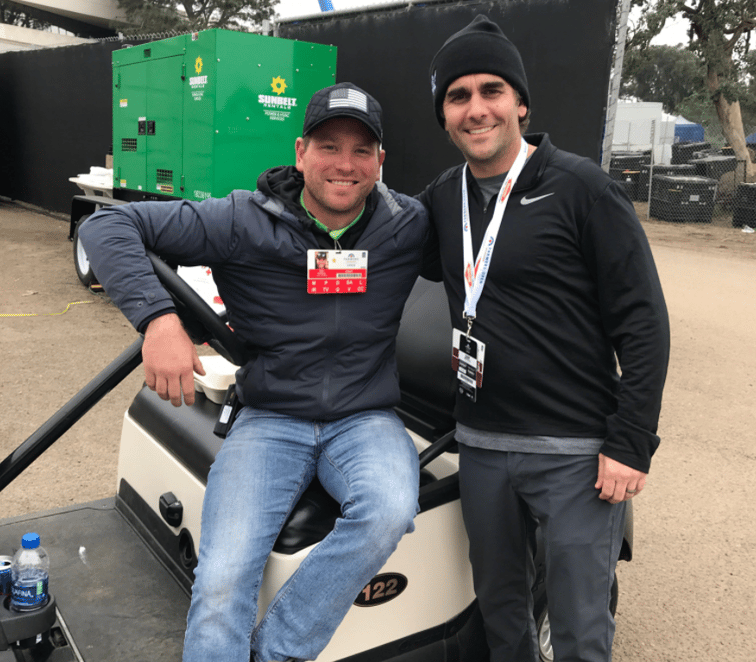
Nick Schling (left) and I on-site at this year's tournament.
I appreciate you doing this Nick.
My pleasure. I’m honored to be a part of the series.
So where did you grow up?
Northwest Ohio
If I was hanging out with your friends from home and they were a little tipsy (one or two pints), how would they describe you?
They would say I’m crazy, mostly because of the endurance racing that I enjoy competing in during my free time. One of my favorite parts about living in San Diego is that Southern California has an extensive network of trails. The weekends for me definitely consist of getting outdoors and running.
Just another Saturday morning for this guy.
If you could produce any event in the world, what would it be?
It would be really interesting to be part of the production of the FIFA World Cup, the Olympics, or another global event. I have been fortunate to work on a litany of golf tournaments (both domestically and internationally), but there is something about countries competing against other countries that intrigues me.
How did you get into the event industry?
I studied sport management at Bowling Green State University, which is near where I grew up in Northwest Ohio. An internship was required to complete my degree. So I got the opportunity to intern for The Honda Classic, another co-sanctioned PGA TOUR event in Palm Beach Gardens, FL in 2012. I went in there knowing very little about the event world. I was really good at moving boxes and I made an impression on the key individuals that helped me get started in the industry. Then I got the opportunity to come out to San Diego work with Andy and the team.
Are there any particular trends in the event industry that you get really excited about?
We're going to touch on this little bit later, but technology. The one thing our team continually talks about on a daily basis is the evolution of technology. How does it impact ticketing, credentialing, different software platforms we utilize, and enhance communications?
Let's work backwards since you've recently finished loading out your event. What are you focused on in the first month after the tournament ends?
It takes 6 weeks to tear down our city.
Strike Phase: The first week is strike week. We’re focused on the dismantle and going from seventy operational partners on site down to two operational partners by the end of the week. We have a unique setup at the golf course which requires a structured dismantle that is coordinated and scheduled with our key stakeholders. Since our operational partners are working on other events around the country, we create and communicate the tear down schedule well in advance of the final event day to make sure both parties are getting their needs met. That sets the stage for the remaining five weeks of strike.
Invoicing Phase: After the strike phase, we transition into the invoicing phase. We’re working with our operational partners to reconcile the work actually done on-site, receive and pay final invoices.
Recap Meetings: We’re focused on getting a snapshot of the event we just produced. We have recap meetings with vendors and key stakeholders. It’s important to hold these meetings while the information is top on the mind. It’s hard to go back and look at the landscape once the tournament is over. We get a lot of good information from those meetings that leads into the planning phase for the succeeding year.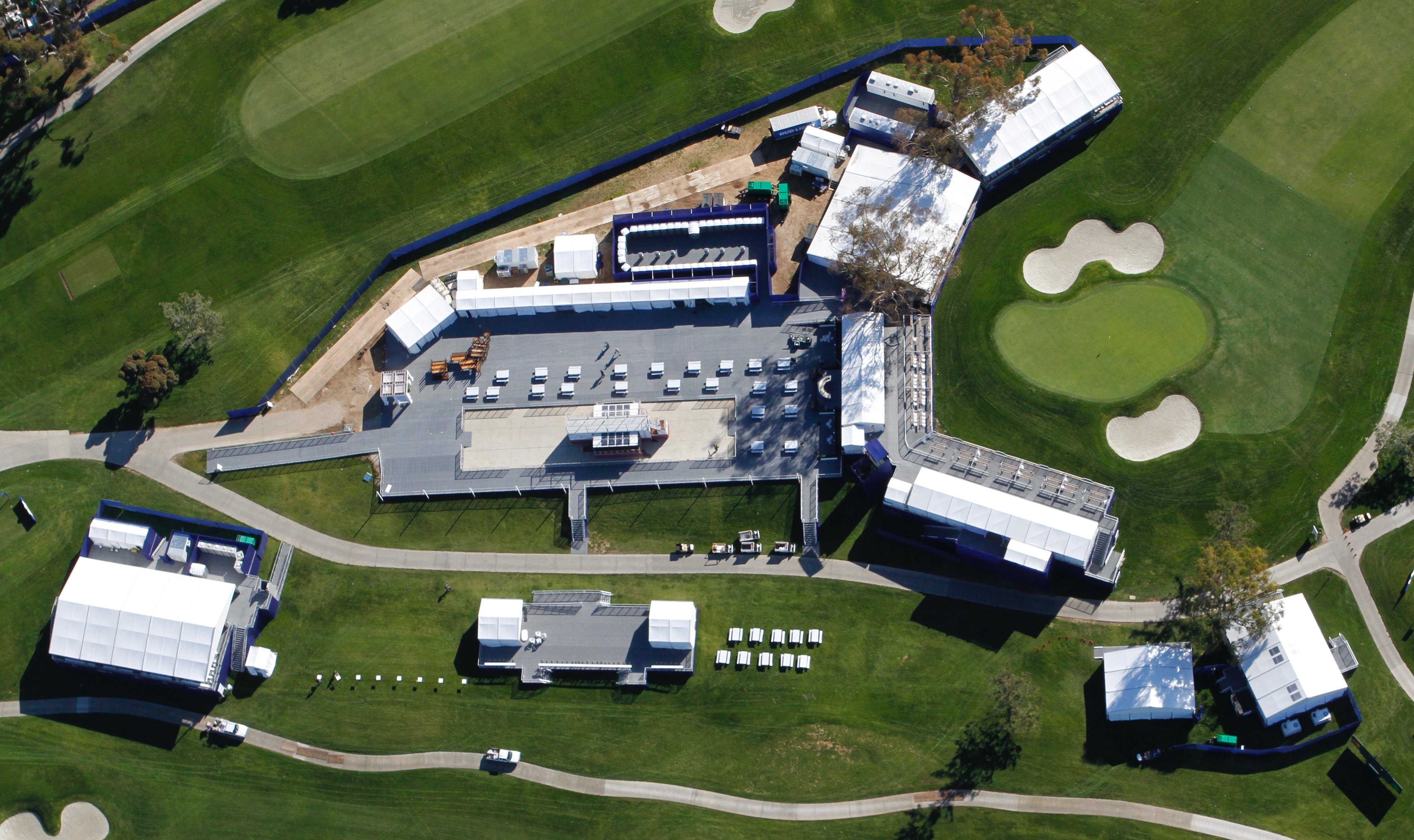
Do you have that all scheduled out well in advance?
Definitely. The overall strike and tear down plan is scheduled well in advance. The plan includes the priorities and a synchronized format. It’s also making sure all operational partners are sticking to the plan and schedule. It’s no different than the load in. It’s just flipping the order of operations but in a more dense timeline.
Any specific advice to make that go smoothly?
The strike and tear down plan really needs to be done well in advance. Then you need to sit down and walk through it with all of your partners. We also bring in four event operations professionals to oversee different vendors and areas of the operational plan. Andy & I can’t manage 70 different groups on our own. I can’t put into words how important it is to have the right team. Andy & I build the plan in advance, and would not be able to execute to the degree that we do without our operations team..jpg?width=4032&name=IMG_0922%20(1).jpg)
What are you focused on after the teardown phase?
We break it down into a few different phases: evaluation, ideation, and exploration.
During the initial evaluation phase, we’re evaluating the financial success of the prior year. We take an extensive look at each of our hospitality products, public venues, etc. Did we achieve the margins we anticipated and planned for? Are there opportunities for improvement?
After the evaluation phase, we move into the ideation phase. After we have evaluated products and structures, we ask ourselves “What can we do differently?” or “Is there a product or structure we should be building?”
Last, we vet new systems of operation, processes, and potential partners/vendors. Along with that, comes the vendor procurement/contract negotiation. The vendor selection process is one of the most important things I do. The larger team will then sit down and discuss the plans, ideas, and contracts. Luckily for us, we already have the right partners in place.
What are the biggest challenges you experience during those phases?
Evaluating the temporary infrastructure versus permanent that we need. We're very fortunate to have a gentleman that comes at the end of our build, goes up, and takes aerial photographs for us. We also have ground-level operational photos taken. We’re able to review and evaluate the aerial and ground photos at later dates. Another challenge is evaluating the rate of growth in the technology field. What is relevant today and what's coming tomorrow? You don't know if what you're signing up for today is going to be the best thing that’s available tomorrow.
That’s one of the areas we really appreciate about Lennd. You are constantly releasing new features and improving the platform. You guys really listen to our problems, but also are helping us think about what is possible. 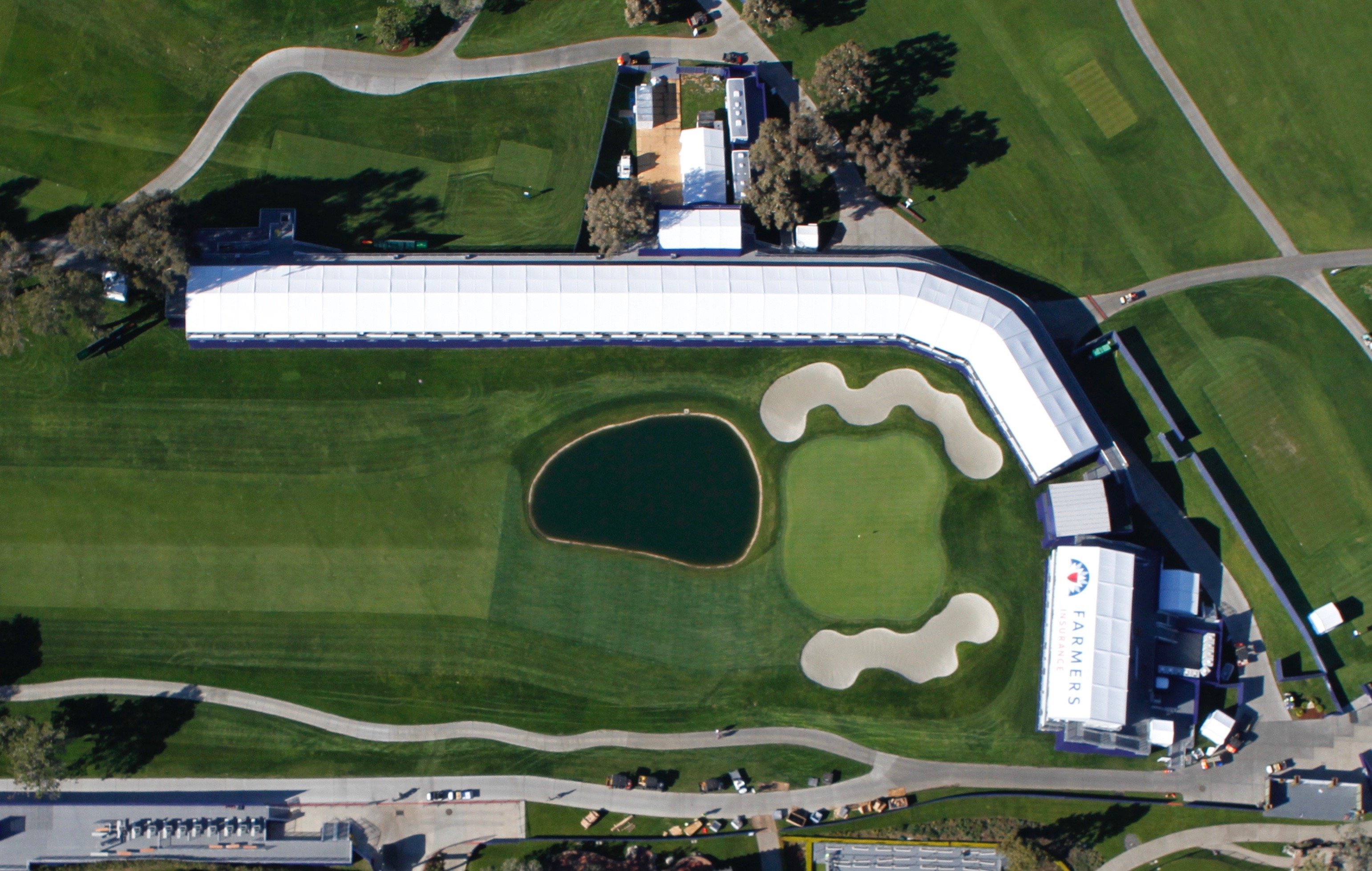
What are you focused on 1-3 months out?
This is definitely my favorite phase of the event. It takes us 12 weeks to build our infrastructure. Our main focus is getting the build started. We start by spotting all of the venues that we have in our build plan. We work closely with our tent and scaffolding company year round to produce engineering drawings. When we’re building on-site, things always change and adjustments need to be made. If there’s a change with the scaffolding/tenting, it will impact all other vendors who have work to do on that specific venue at later dates. We are in constant communication with our other operational partners - have final meetings, reviewing changes, etc. Each vendor has different drop dead dates. We have to juggle different due dates and plans.
One of our unique challenges is that we are essentially an active construction site on a golf course that is operating as normal on a daily basis. We have to plan our build around different golf course activities and other events/activities that our other key stakeholders have on schedule as well. In addition to the City of San Diego (golf course), we work closely with The Lodge, The Hilton, Torrey Pines Club Corp, Scripps, and UCSD (gliderport) who all have a vested interest in our daily operation at Torrey Pines. This is different than most golf tournaments on the PGA TOUR, to have the multitude of key stakeholders at our host site alone. It requires constant communication.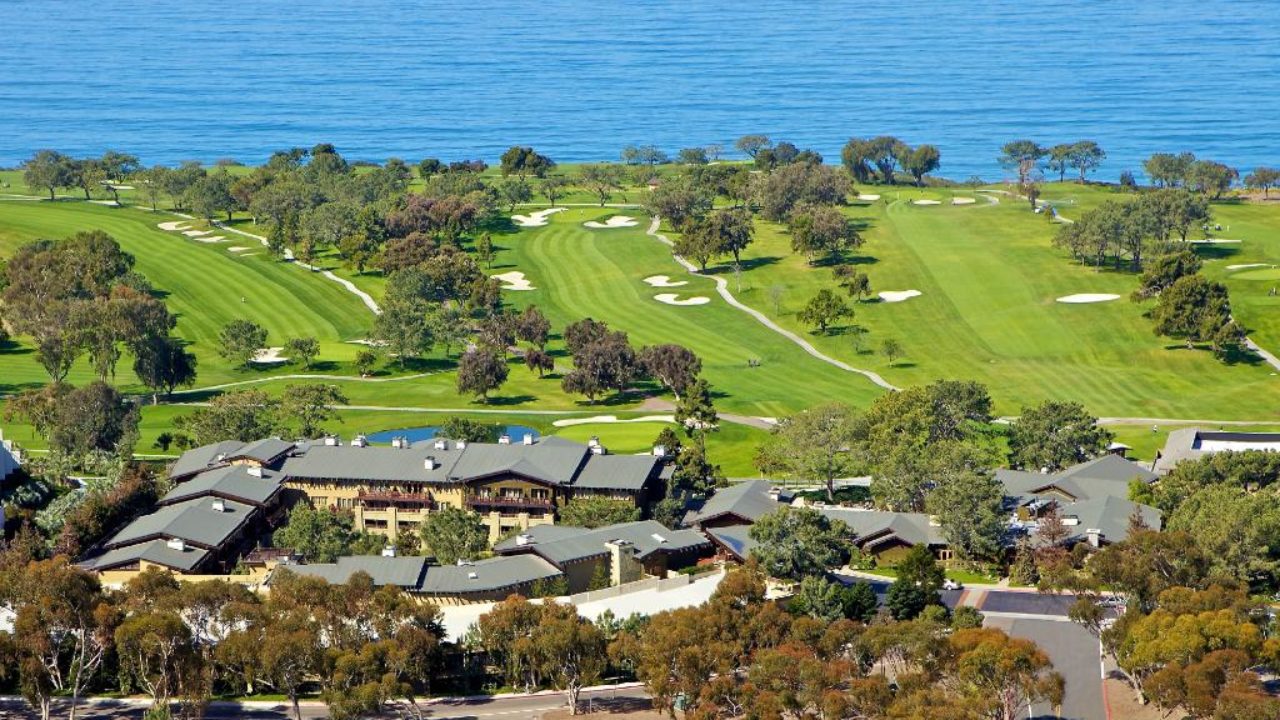
How is that communication disseminated? Are there regular meetings with those six stakeholders?
We start to have meetings with the different key stakeholders around the three month window. I have a key point of contact with each stakeholder. I share the build schedule well in advance and update these key stakeholders on a day-to-day basis as things change. I find that advanced communication eases any heartache that could happen.
Speaking of your 70 different vendors, do you categorize them in a certain way?
We break it down by infrastructure & service vendors. The infrastructure vendors are groups who lay the groundwork for our “city”: scaffolding/tenting, power, HVAC, furniture, signage, etc. They are essential to building our event venue.
Then you transition into service. The service vendors are food & beverage, catering, parking, transportation, security, law enforcement, etc. The service group will provide the bulk of their work during the event itself.
Photo Cred: Farmers Insurance Open
What is the biggest challenge on-boarding or advancing vendors?
It’s going to vary based on the vendor’s scope and service rights. One challenge that we have, given the date of our event, is having the setup of our event take place over the holiday season. Since our event is in January, we have to make sure we have clear lines of communication and clear expectations through the holidays.
Do you have any specific advice around that?
It goes back to constant communication. My job is to hold and maintain the 30,000 foot view of the event. We bring in operational partners that are experts in their field - they are the best at what they do. I really lean on the field experts to coincide with the 30,000 foot view that I am managing to work in the most efficient way possible.
What are you doing in the final two weeks leading up to the event?
We refer to two weeks out as “advance week” and the final week as “tweak week”. At this point, 90% of the build is complete. The remaining build is the touch up work, to get the event to the level of presentation that we hold ourselves too. All of our partners are on site spotting locations, setting up generators, signage, furniture, and completing build outs. Two weeks before the event, I bring in most of the operations team and delegate tasks. I educate them on their individual responsibilities, direct reports, the game plan, and timeline. I want to empower them with the information they need to be successful and run with it. Outside of the daily management to ensure we get to the finish line, we will start fine tuning the teardown plan, at this point.
What does tournament week look like for you?
Technically, tournament week starts Monday. We are not open to the public on Monday or Tuesday. Our peak day is Saturday. Once we’re open to the public, my number one focus is public safety. We have tens of thousands of people on the golf course everyday. We have to work in accordance with law enforcement, Fire/EMS, medical staff, and various other with public safety partners to ensure a successful, safe event. Before gates open each day, we are sweeping the event venue: making any adjustments necessary, cleaning the property, and getting staff in place at least one hour before gates open.
What are the biggest challenges during that time?
The size of the event venue is our biggest challenge. From the furthest south point to the furthest north point is two nautical miles. There’s a lot of ground that needs to be covered and a lot of space for thousands of people to occupy. How do we keep track of the entire event, make sure everything is safe and set an hour before gates open? It goes back to deploying a talented operations team. The operations team will ensure adjustments are being made and everyone is safe.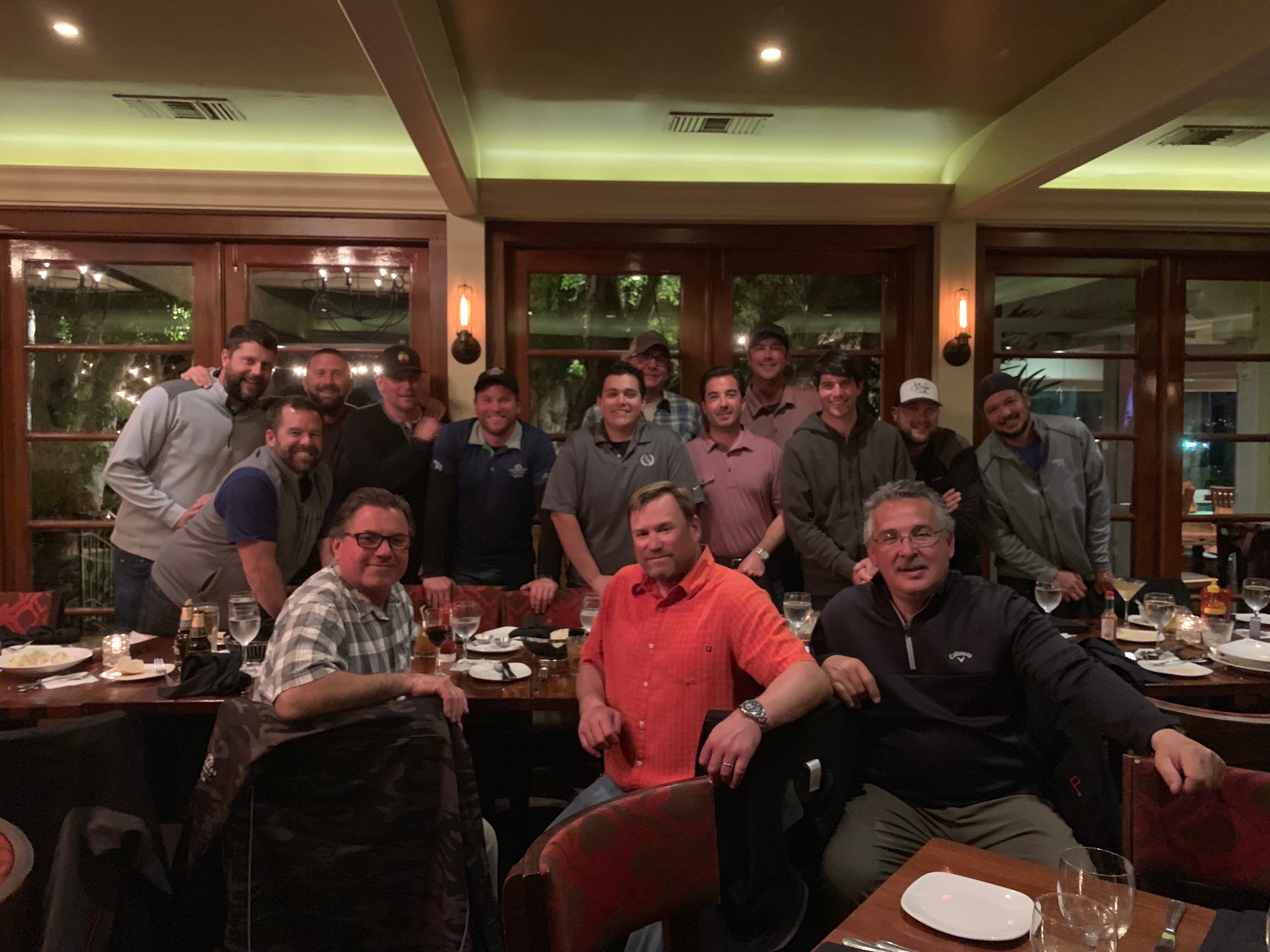
Say hello to the 2019 Farmers Ops Team
Obviously, your schedule is critical throughout this process. What are the biggest challenges managing a production schedule over the course of 6-9 months, leading into a tournament week and after?
Luckily for me I have been doing this for quite a while. I have a really good understanding of the order of operations and when things need to happen. That information helps me update individual vendor and operation timelines. I house all timelines in a master schedule. This year I had about 50 different spreadsheets in Google and Excel that encompassed different elements of operational planning & timelines. Which is something else I am excited to work with Lennd on. Having that production schedule, with real-time updates in Lennd will be a game changer.
Do you have any advice for managing your production schedule?
I am fortunate that I get to work with Andy. He has been in the industry longer than I have and has a really good understanding of everything that I mentioned above. I will often ask him to look at timelines, schedules, etc. and get his opinion on how everything's coming together. It never hurts to have a second set of eyes on it. Especially someone who has the talent and experience that Andy does.
What are some of the intangible traits you look for in your vendor partners?
- They have to fit the “FIO Culture” that we have built. That’s the first conversation Andy & I have when evaluating any new partners/team members: will they fit into the culture we have built?
- They are clearly a Field Expert in their respective category.
- They have an attitude/mindset of going above and beyond.
- They know how to have fun while working hard.
Lastly, do you have any career advice for those in this space?
When I started, I knew absolutely nothing about events. I knew how to work hard and how to have a good attitude. I was willing to do anything. You start to learn more about events and how they operate. If you see somebody that is good at what they do, attach yourself to them and become a sponge. You have to be humble and be willing to learn. Don’t feel like you need to know all of the answers right out of the gates.
I really appreciate the time and the advice.
Of course. Anything I can do to help.
----------------------
LENND, INC
Lennd is a next generation event management platform that simplifies operations and logistics so event teams can work smarter, move faster, and improve their ROI.
To learn why some of the most respected event teams trust Lennd to power their operations or sign up for a demo: www.lennd.com
FARMERS INSURANCE OPEN
The Farmers Insurance Open is a professional golf tournament on the PGA Tour, played in the San Diego, California, area in the early part of the season known as the "West Coast Swing". The event is organized by The Century Club of San Diego. www.farmersinsuranceopen.com
CENTURY CLUB OF SAN DIEGO
The Century Club of San Diego is a San Diego-based charitable organization, established in July 1961. They are the organizers of the Farmers Insurance Open, an annual PGA Tour golf tournament at Torrey Pines Golf Course in San Diego, solely for charitable purposes. The proceeds of the Farmers Insurance Open often go to the Monarch School, although in 2011 they reported to have donated over $1.3 million to over 200 charities. The Century Club are also major fundraisers of the San Diego County Junior Golf Association, investing in San Diego golf education. www.centuryclubsd.org



